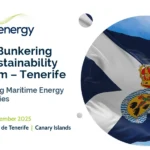While we are all glued to the situation in hospitals where people are dying every day because of COVID-19, there’s also an unseen devastation that’s happening in our oceans
The world has become highly dependent on plastic without even noticing it. But now, we are slowly drowning in plastic and it’s doing more harm than good to the only planet we call home.
It all started with a documentary called “Chasing Coral” where a team from The Ocean Agency was able to film an extraordinary site in New Caledonia’s coral reef. The corals looked like they were glowing, but their rare vibrant colours weren’t because they were beautiful. It was a sign that they were dying.
The COMPAC bearing system, which Thordon now offers with a lifetime bearing wear life guarantee, prevents the leakage of millions of litres of oil into the world’s oceans and reduces ship operating costs associated with aft seals and lubricating oil.
Low-sulphur ship fuel, decarbonisation, ballast water management: Stricter international emission limits have moved environment protection to the top of the maritime industry’s agenda. The topic will also feature prominently at SMM, the industry's leading international trade fair. Numerous exhibitors will present innovative green technologies, and at the accompanying
Providing an overview of the technical challenges faced when designing and building systems for prestigious projects, such as mega yachts, offshore and naval vessels, Beavis said that while water treatment is a ‘mission critical’ component to operations, it is, in reality, “an afterthought” for naval architects involved in the design and construction of arguably the
Pollution of the marine environment, especially with plastics, has reached alarming levels. It is estimated that 8 million tons of plastic waste reach our seas and oceans every year! Plastics poses a huge threat for the populations of 600 different marine species, which are injured or die as a result of entanglement or by eating them.



















